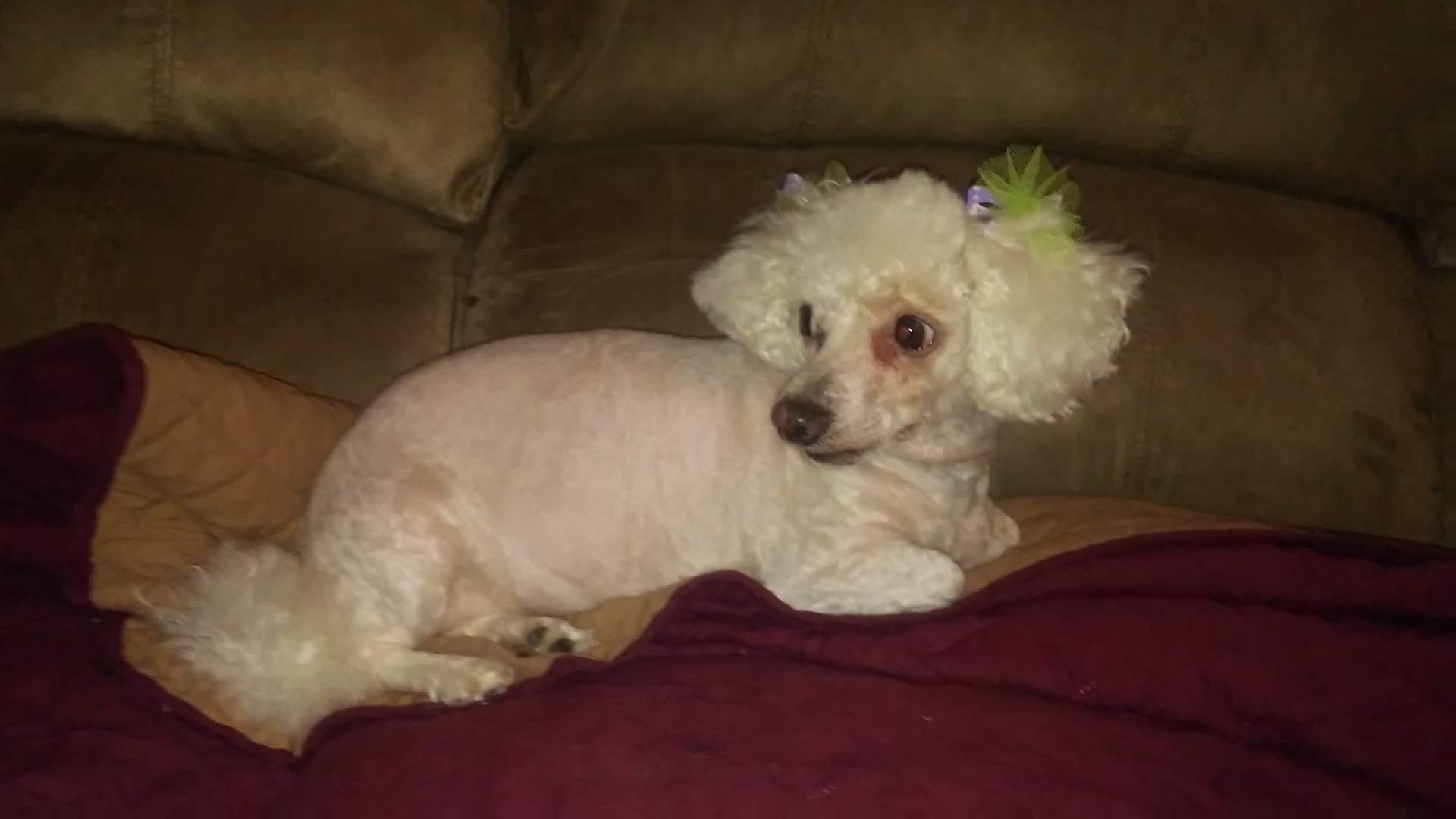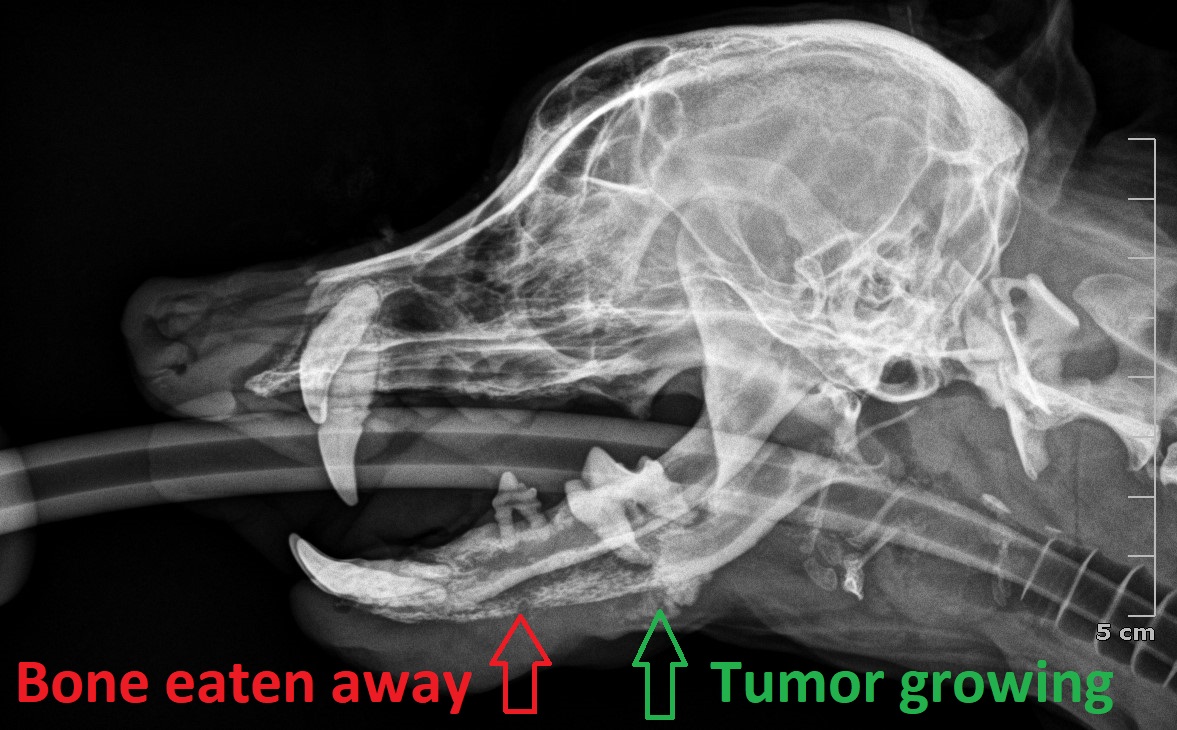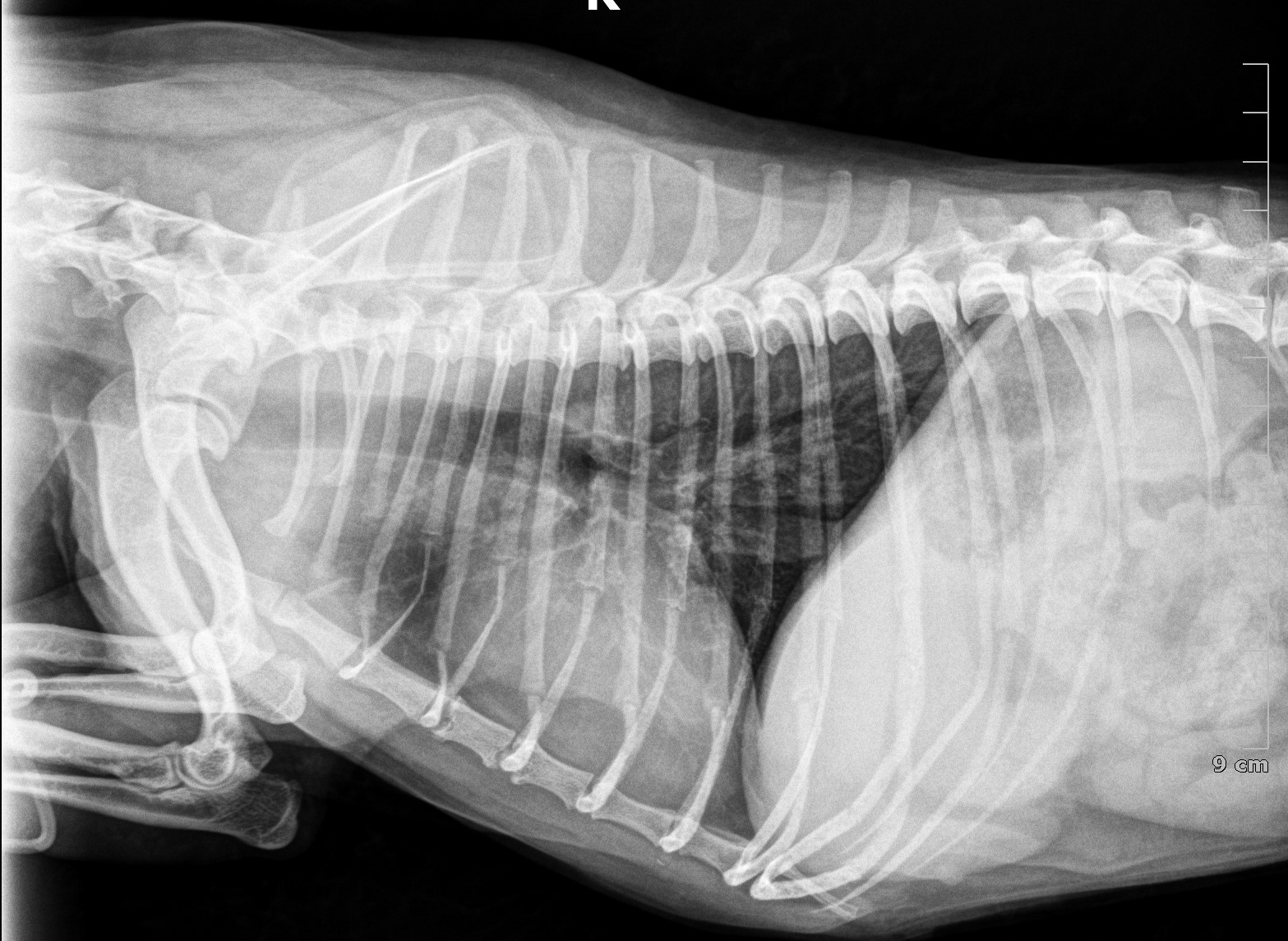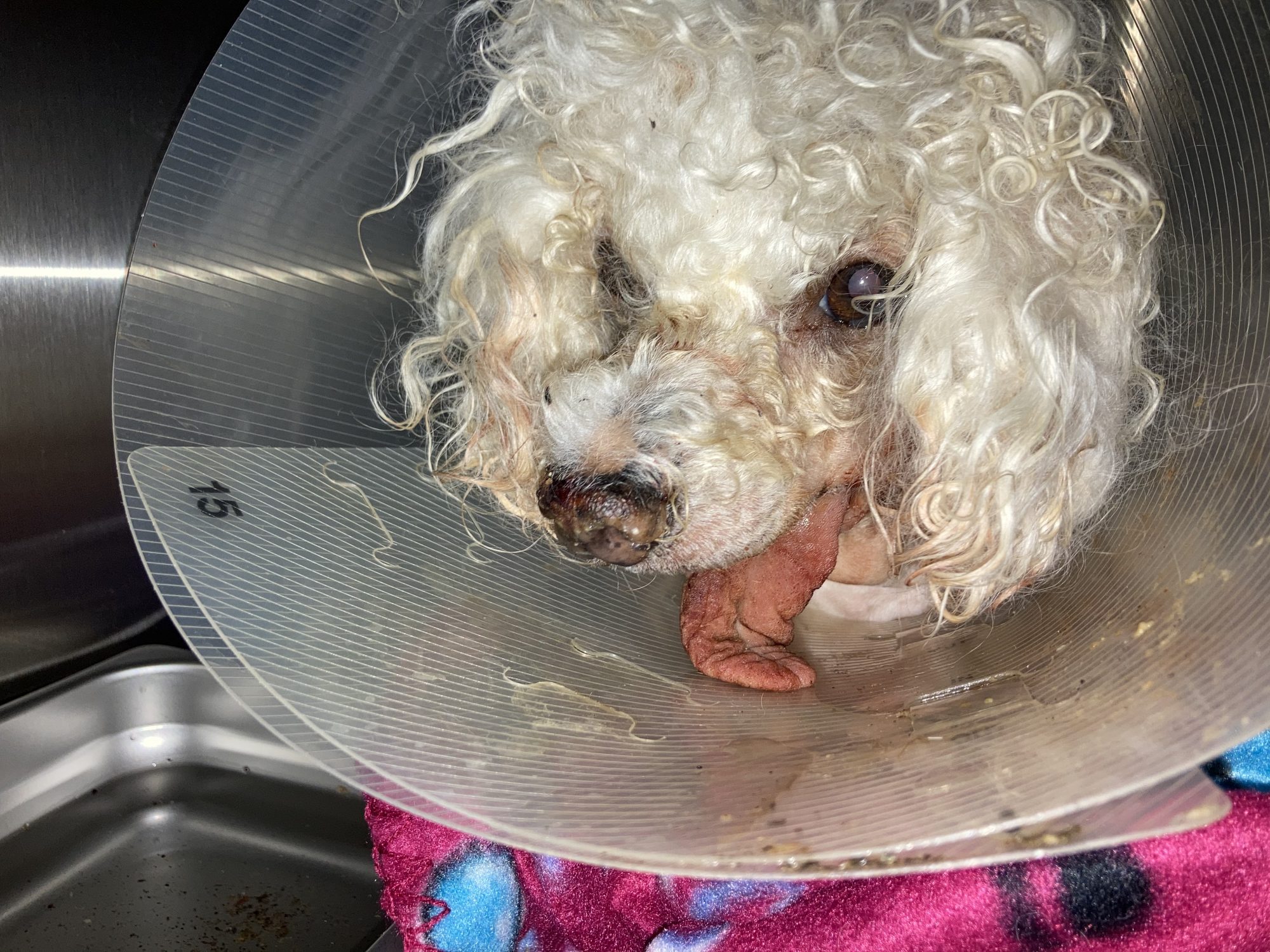How to Feed Dog With No Bottom Jaw
Mimi, a cute 9 year old miniature poodle, started to bleed from the left side of the mouth.

Initially, it was on and off, nothing scary. Then she started to drool after eating and drinking. Sometimes, the saliva was mixed with blood. When the bleeding became consistent, Mimi's owner went to her family vet.
The conclusion was shocking: Mimi had a tumor in her left lower jaw bone (mandible). Her vet took X-rays (below), which showed that the front of the left lower jaw bone was eaten away by an aggressive tumor, which the back section of the jaw showed a growing tumor.

WHAT FOLLOWS IS GRAPHIC, SO YOU MAY WANT TO STOP READING IF YOU ARE A SENSITIVE SOUL.
Mimi was referred for surgery. It is necessarily invasive, because you can't remove the mass only. The tumor was in the jaw, so part of the jaw, including the teeth, had to be removed. Removing part of the lower jaw or mandible is called a partial mandibulectomy. As drastic as it sounds, dogs look fairly good after this surgery. More importantly, they're finally comfortable once the mass is removed.
Mimi's owner drove all the way from from New York City to Harrisburg Regional Vet Surgical Specialty ( www.HRVSS.com ).
I had a long heart to heart with Mimi's owner, trying to explain (along with pictures) how Mimi would look like after surgery. I kept saying: "It's not for everybody."
All Mimi's owner wanted is to help her dog get comfortable.
On exam, it appeared that the mass had grown so much, that it had invaded the front of the jaw and extended to the right half of the mandible.
Now, that was a whole different story. Almost ALL of the mandible had to be removed. This is called a radical mandibulectomy. This is much more invasive and cosmetically dramatic.
I called Mimi's owner and we had another heart-to-heart discussion. Again, I said: "It's not for everybody."
But Mimi's owner was committed to doing anything to help her dog, knowing the possible risks and complications. So we proceeded with surgery.
Actually, before an invasive surgery, we needed to make sure the tumor had no spread to the lung (see X-ray below), which fortunately it had not.

YOU HAVE BEEN WARNED, WHAT FOLLOWS IS NOT FOR THE FAINT OF HEART.
Surgery was uneventful. About 95% of the lower jaw was removed with no complications. Mimi recovered smoothly from anesthesia. She was kept overnight in the hospital, where she was monitored by a nurse, and received plenty of TLC.
Thanks to multiple types of pain medications given before, during and after surgery, she seemed very comfortable. So comfortable, that she ate 4 times that night!
Of course, she had to relearn how to eat, so things were a bit messy as you can see in the picture below.

Mimi was discharged the very next morning.
The jaw was sent out to the lab for evaluation. The tumor was a squamous cell carcinoma, one of the most common types of cancer in the mouth (in cats and dogs).
Fortunately, the lab confirmed that we "got it all."
Since surgery, Mimi has been home, where her owner took exceptionally good care of her.
Clearly, this surgery is not for everybody. It requires a very dedicated and loving pet owner who is willing to assist their pet with eating and drinking as needed, and who can get over the cosmetic appearance of their pet without judgment.
With modern surgery and generous pain medications, most pets do very well after invasive surgery, including removing a large part of the jaw.
Phil Zeltzman, DVM, DACVS, CVJ, Fear Free Certified
www.drphilzeltzman.com

Dr. Phil Zeltzman is a traveling veterinary surgeon in Pennsylvania & New Jersey. An award-winning author, he loves to share his adventures in practice along with information about vet medicine and surgery that can really help your pets. Dr. Zeltzman specializes in orthopedic, neurologic, cancer, and soft tissue surgeries for dogs, cats, and small exotics. By working with local family vets, he offers the best surgical care, safest anesthesia, and utmost pain management to all his patients. Sign up to get an email when he updates his blog, and follow him on Facebook, too!
Source: https://www.drphilzeltzman.com/blog/you-removed-how-much-of-mimis-jaw/
Posting Komentar untuk "How to Feed Dog With No Bottom Jaw"